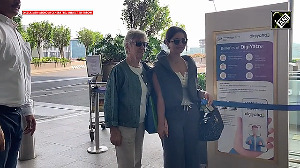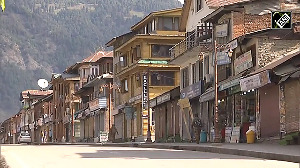Can you please explain the major difference between the Central Excise exemptions 83/94-CE and 84/94-CE both dated 11th April 1994 and relating to job-work to be carried out by Small Scale Industries working within the exemption limit of Rs 1 crore (Rs 10 million)? How is job-work defined?
Notification No. 83/94-C.E. grants exemption to specified goods manufactured as job work in a factory subject to certain conditions:
There are other minor conditions
Notification No. 84/94-C.E., grants exemption to specified goods removed from a factory to a place outside the factory for getting any job work done. The major conditions are:
There are other minor conditions
In both the notifications, the explanation defines job-work as "processing or working upon raw materials or semi finished goods supplied to a job-worker, so as to complete a part or whole of the process resulting in manufacture or finishing of an article or any operation which is essential for the aforesaid process, and the expression job-worker shall be construed accordingly."
How can we find out whether the item we want to export is allowed for export or not?
The central government has notified the Export Policy through Schedule II to Indian Trade Classification (ITC) Harmonised System (HS) of import and export items. The Schedule II says that all items are allowed for export without any restrictions unless covered under Table A or Table B annexed to the said Schedule II.
In other words, these Tables list out the items that cannot be exported unless certain conditions are fulfilled. All other items that are not listed in Table A or B can be exported freely i.e. without any restriction.
Table A and B specify against each entry/item as to whether the particular item or items can be exported without a license but subject to fulfilment of certain conditions or whether a license has to be obtained from the concerned authorities or whether they can be exported only by or through certain State Trading Enterprises (e.g. STC, MMTC, NAFED etc.) or they can not be exported at all (i.. prohibited for export).
So, you must check out whether item is covered under Table A or B of Schedule II to ITC (HS) and be guided accordingly.
In one of our documents presented under letter of credit, the issuing bank has pointed out a discrepancy that the LC names the beneficiary as 'ABC limited', whereas the document says 'ABC Ltd.' Is the bank justified in raising the discrepancy?
The International Chamber of Commerce (ICC) has brought out its publication no. 645 covering the International Standard Banking Practices for the examination of documents under documentary credits.
This is usually referred to ISBP 645. It is a practical complement to Uniform Customs and Practices for Documentary Credits, ICC publication no. 500 (known as Up 500), which are universally accepted rules for documentary credits.
As per Article 6 of ISBP 645, the use of generally accepted abbreviations, for example, "Ltd." Instead of "Limited", "Int'l" instead of "International", "Co." instead of "Company", "kgs" or "kos" instead of "kilos", "Ind." Instead of "Industry", "mfr" instead of "manufacturer" or 'mt" instead of "metric tones" -- or vice-versa -- does not make a document discrepant.
You may take up the matter with the concerned bank pointing out the above Article 6 of ISBP 645.
During festival seasons abroad, the Gem & Jewellery (G & J) units in Special Economic Zones (SEZ) receive lot of export orders, at times beyond their Zone unit's production capacity. Can the G & J units in SEZ in such circumstances procure semi finished or finished jewellery from Domestic Tariff Area(DTA) to supplement their production for generating additional exports; will the DTA supplier get replenishment of gold contained in such jewellery + permissible wastage without payment of duty against such supplies; pre-requisites like filing bill of export through SEZ Customs, subjecting such transactions to all Customs procedures on par with physical exports, making payments for such procurements in foreign exchange from the Exchange Earners Foreign Currency (EEFC) account of the SEZ unit etc. will be applicable in such case.
SEZ is a specially delineated duty-free enclave and shall be deemed to be foreign territory for the purposes of trade operations and duties and tariffs. Para 7. 1 (b) of the Foreign Trade Policy (FTP) is quite categorical that goods and services going into the SEZ area from DTA shall be treated as exports. Para 7.2 (b) of FTP amplifies this point.
Para 7.9 of FTP deals with entitlements for supplies from DTA to SEZ. Para 7.9 ( c) specifically says that supplier of precious and semi-precious stones and processed pearls from DTA to units situated in SEZ shall be eligible for grant of Replenishment Licences at the rates and for the items mentioned in the Handbook of Procedures, Vol. 1 (HB-1). Since, this para mentions only precious and semi-precious stones and processed pearls and not procurement of semi finished or finished jewellery, there could be some apprehension as mentioned by you.
At a conceptual level, there is nothing in the FTP that warrants the situations mentioned by you i.e. supplies by DTA units to SEZ units to be treated any differently from benefits available for physical exports. That is my opinion. I suggest that you may represent the matter to the Government and get the words 'semi finished or finished jewellery' also included in para 7.9 (c ) of the FTP to make the provision abundantly clear.
The other point that may warrant a doubt may be as to whether the items procured from DTA are required for the activities of the concerned SEZ unit. Para 7.10.2 of HB-1 says that in case of such a doubt, the decision of the Development Commissioner shall be final.
This could be very necessary if the SEZ unit is registered only as manufacturing unit but wants to procure finished items from DTA to meet the increased demand, which could be treated as a trading activity.
One option that SEZ units may consider to tide over the spurt in demand during festival seasons is to sub-contract a part of production or production process. This is clearly permitted in Para 7.12 (a) of the FTP and the conditions for sub-contracting are detailed in para 7.12 (b) of the FTP. The procedures for sub-contracting are covered from Para 7.21.1 of HB-1 through to Para 7.21.8 of HB-1. I am not elaborating the provisions, as these provisions are quite clear and I do not see much scope for divergent interpretations.
TNC Rajagopalan will answer questions from readers on SME-related issues pertaining on taxes, exim policies or registrations/reservations, etc. Queries can be sent to smequeries@business-standard.com.








 © 2025
© 2025